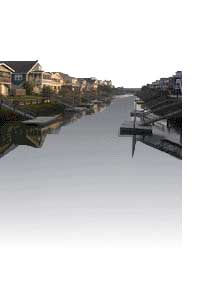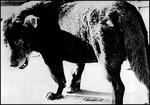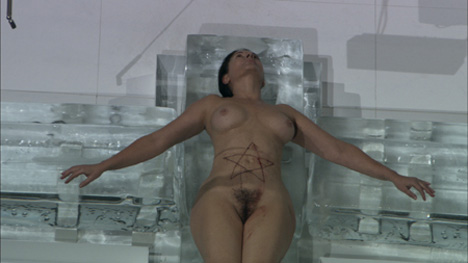Walk Real Slow
Anna Helwing Gallery | June 2007 | PRESS RELEASE
Anna Helwing Gallery is pleased to announce its upcoming
summer exhibition Walk Real Slow curated by Guillaume Rouchon and Anke Kempkes, and featuring Agnieszka Brzezanska, Martin
Soto Climent, Megan Sullivan, Manuela Viera Gallo, and Babette Mangolte.
Walk Real Slow will run from June 30 – August 18, 2007. The opening reception will be held on Saturday, June 30 from 6 to 8 pm. The gallery is located at 2766 S. La Cienega Blvd., Los Angeles, CA 90034. Regular gallery hours are Tuesday through Saturday, 11 am to 6 pm. For further information contact Anna Helwing Gallery at (310) 202 – 2213.
WALK REAL SLOW
Presented in collaboration with BROADWAY1602 in New York, the international group exhibition Walk Real Slow features new and historic works by artists from Warsaw, Mexico City, Berlin, Santiago De Chile and New York.
The theme of Walk Real Slow is equally poetic as it is matter-of-fact: a conceptual imperative with a slight grotesque undertone offering an alternative - if not utopian -perspective, as a radically-changed modus operandus for one of the most insignificant performances of everyday: Walking. Walking seems to be the most antagonistic option for managing daily life. In a place like Los Angeles known as the city of cars, the worship of machine-enforced movement often reaches an almost mythological dimension.
In the 1960s Guy Debord and many other bohemian revolutionists considered the leisurely conquest of the urban milieu - by floating (derive) around in gangs or as individual protagonist - a subversion of common ideas of efficiency and global commercial viability.
By now in the year of 2007, it is not only the environment but also really all thinkable spheres (including immaterial) that are swallowed and absorbed by concepts of commercial and political cooperativeness. In a place like Los Angeles, with a strong reputation of being a historically central spot for commercial design taking over most of the urban vernacular culture of the US, the claim of Walk Real Slow seems to be both anachronistic and absurd.
Yet this is exactly the beauty of the motif for this exhibition taking place at Anna Helwing Gallery. There is a poetic force and strength in this proposal that seems to have an all new sense and relevance. Slowing down, giving an awkward sense of awareness to every single step, acquiring a new sense of time, a kind of latent rupture of the processes we are used to – also reminiscent of the counter-cultures of the past - reclaiming the hopelessly nostalgic and sentimental approach to wasting time while heightening awareness and sensitivity. It’s a very specific and fun operation…
Warsaw-based artist Agnieszka Brzezanska’s practice is especially tied to casualness and the vernacular. Also at ease with paint and video, Brzezanska presents here an intriguing triptych whose subject involves herself and her close friends. Unassuming, her work is deeply infused with a sense of absurdity as she stages circumstances and models and uses everyday props in creating an imagery whose provocative stance is balanced by a severe and sometimes brutal look at everyday activities and commodities. As a seminal piece, this work embodies Breazanska’s taste for cryptic, non-referential narrations in a mysterious association of signifiers whose ultimate meaning is left open by the artist.
New York City-based artist Babette Mangolte became in the 70’s the photographer and cinematographer of NY performance scene. She worked with new avant-garde dance performers Yvonne Rainer and Trisha Brown as well as with the influential protagonists of experimental theatre of the time like Richard Foireman Robert Whitman. Mangolte was director of photography on Rainer’s first films. Soon she released her feature film What Maisy Knew (1975) with Rainer and other performers working as actors as well as Philip Glass. This film is a piece of eccentric experimental narration, a silent movie telling the story in subtle images.
The protagonists were coming by in their casual clothes, and the setting was just a take over of a friend’s house, retaining all the contemporary interior of the 70’s as it was. The performances were improvised and evolved along a fine line of actions. The camera becomes the subject of sensitive observation while a strange world shifting between reality and dream unfolds in front of the lens. There is a special sense of time in What Maisy Knew; similar to the imaginary perception of a child in accordance to the novel of Henry James the title is taken from.
In 1978, Mangolte directed Water Motor, a solo by Trisha Brown. Again a silent movie, Mangolte’s camera gives dance another level of perception, varying sections of slow motion to heighten the very logic of the feel of the choreography that is about the circular movement of a machine. The film looks like a late take on a constructivist idea realized in body movement and expression. The dancer is isolated in her studio providing the neutral setting of a white cube. At times, the dancer seems to lift weightlessly up the ground completely absorbed in the mechanically rotating movement. In the early 70’s, Trisha Brown did some astonishing street actions with a group of performers. In Group Accumulation, the performers are lying on the pavement in Central Park lined up in different formations, sometimes blocking the street and sometimes lying alongside the road while people are passing by with more or less attention to this disruptive but casual presence.
In another performance Brown walks horizontally down a water tank in NY. Mangolte shot this spectacle in an enigmatic and surreal way. All of these performative activities and ideas were intellectually shared by Mangolte and therefore not only documented but co edited and represented by her with a highly involved sense of aesthetic authenticity to the concept behind them. And equally important Mangolte shared the idea of creating an alternative sense of time and performance of the everyday. The motif of the walking camera eye in the streets of NY moving up and down the façade and following the passer-by’s in an almost obsessive mode of hyper perception was at the heart of her second feature in Camera Je, la camera I 1977.
Based in Mexico City, Martin Soto Climent is presenting a modular and flexible piece entitled Father Chair (2007) based on used shirts and shoes. In using such charged items, Soto Climent re-negotiates the accepted symbolical value of these objects while contextualizing there past history and confronting it to that of an art object. In producing assemblages based on readily available items, Soto Climent also offers a sensible insight into the seemingly unquestionable convictions we hold about objects around us. By way of antagonism, the obvious absence of the human element in this work - unworn clothes - brings into light the quality of the relationship that exists between Men and the artifacts they produce.
Berlin-based artist Megan Sullivan’s production can first be misread as casual or vernacular. It is however imbued with historical research and a surreal interplay of personal data and pictorial vocabulary borrowed from public outlets such as history books or advertising. As part of Walk Real Slow, Sullivan is presenting Untitled (Czar Nicholaus) (2007), a gouache on paper whose aesthetics recalls – if not mocks – that of black and white photography. This choice not only confers a quasi-documentary feel to the piece; it also suggests a photograph as initial model. Yet as the title indicates, it is in fact a mise-en-scene of Prince Nikolajewitsch of Russia as a seductive young man rambling about on a tropical dock, based on the reproduction of an official imperial portrait found in a history book.
Living and working in New York City, Manuela Viera Gallo allows chance and probability to play a part in her work. In processes reminiscent of unbound expressionism and performance, she creates works reflecting her acute sense of observation and analysis in a way relevant to her Chilean background. For this exhibition, Viera Gallo presents Hide (2007), a sculptural work referencing mine fields. Combining found broken model hands with an organic-looking blob of acrylic paint, Viera Gallo disseminates the items throughout the gallery to emulate the randomness associated with the actual deadly weapons found in war zones. Infusing this work with a sharp political sensitivity, Viera Gallo draws a parallel between a war weapon and the Art Object, placing the viewer in the shoes of a potential victim and enticing him into a heightened state of vigilance.
Original story at Anna Helwing Gallery






